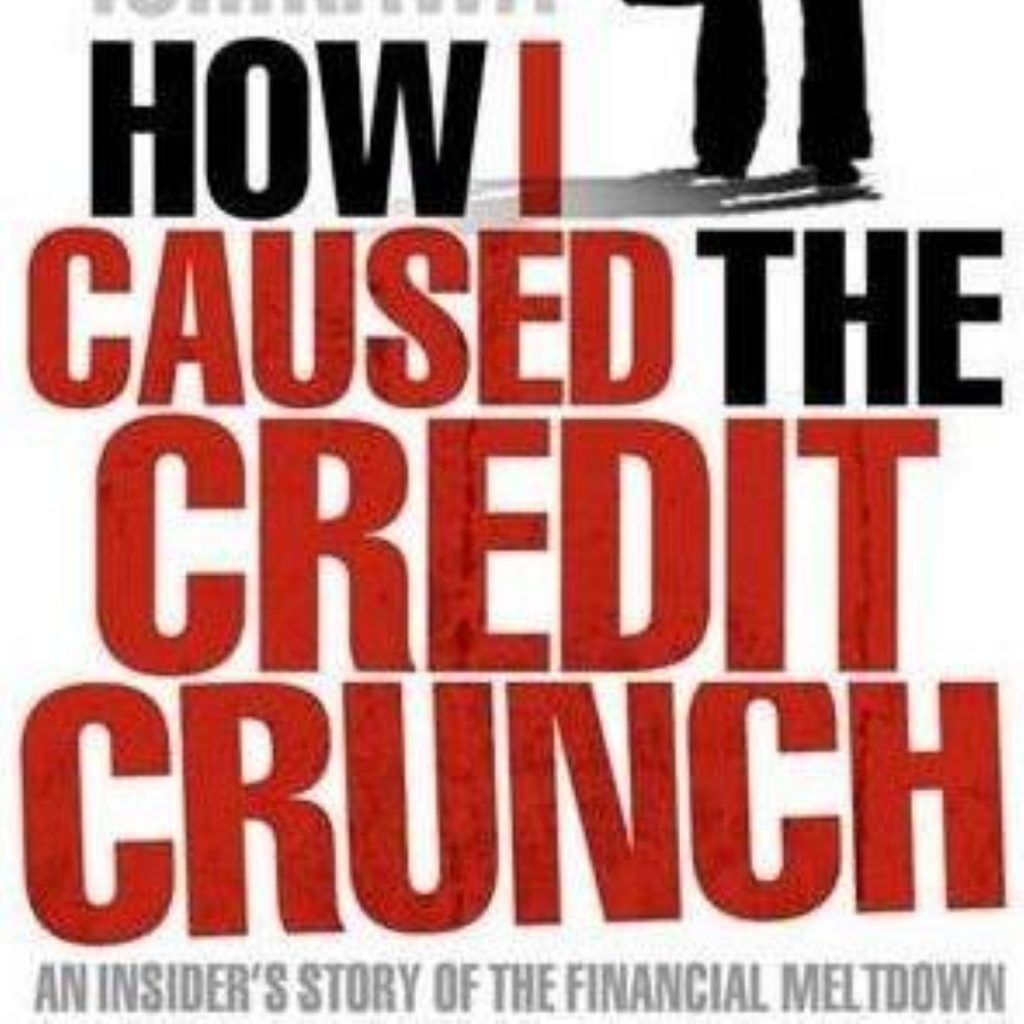Review: How I Caused the Credit Crunch
An attempt to explain the credit crunch in the form of a novel – and written from the perpective of bankers themselves.
How I Caused the Credit Crunch – Tetsuya Ishikawa
Icon Books – April 16th
Review by Jessica Best


Titles like ‘The Crunch: How Greed and Incompetence Sparked the Credit Crisis’ and ‘Who’s to Blame for the Economic Mess We’re In’ have populated the best-sellers list in recent months as we all look for an answer to the big question of our time: who caused the credit crunch? Tetsuya Ishikawa’s ‘How I Caused the Credit Crunch’ is the latest book that offers to provide that elusive response.
Its unique selling point is that it’s a novel. Although Ishikawa is a former investment banker who held positions at Goldman Sachs, ANB AMRO and Morgan Stanley (which made him redundant in October last year), he uses the character of Andrew Dover to portray his experience in the global credit markets over the last seven years as a way of being honest without having to name names.
First, a word of warning; the book will do little to quell any ill-feeling towards those many deem responsible for the loss of their homes, life savings or faith in capitalism, but what the story of Andrew Dover does provide is a much clearer picture of how we got to where we are.
I won’t pretend I understood all, or even most, of the ins and outs of the structured credit markets. Never before has a book contained so many acronyms, and abbreviations such as ABS (asset backed securities), CDO (collateralised debt obligations), LIBDOR (the London Interbank Offer Rate) and MBS (mortgage backed securities) meant the glossary provided in the back was greatly appreciated.
But as the abbreviations came thick and fast, the sheer pace with which the credit bubble developed soon became apparent and the dizzying sums people were buying, selling and lending are still shocking despite the trillion dollar bail-outs we’re now familiar with.
We follow Dover from his first job at fictionalised investment bank Vandebor, where he starts knowing next to nothing about the world of investment banking. According to his boss Kim Reiner, if you can find a banker who does then you’re in luck. As Dover reaches the position of global head of UK analysts within three years he is already on wages of $400,000 and hungry for his “first buck” – his first $1 million. He soon finds such riches at positions in American bank Orrington and Irvin May.
The intricacies of the credit products Dover, and presumably Ishikawa, were selling are well explained, and using diagrams to explain the basics of securitisation and the idea of an Easter egg hunt to represent correlation trading suggests the author really does want to break down the barriers that have excluded so many ordinary people from understanding just what went wrong.
And although the chapters detailing credit conferences from New York to Barcelona may take their toll, the vivid and at times crass accounts of the ludicrous amounts of company cash these huge corporations spent on extra-curricular activities will hold most peoples’ interest. The German brothels, London restaurants owned by celebrity chefs, and luxurious hotels five-star hotels demonstrate the lifestyle people like Dover came to expect.
As the markets wind up to an almost frenzied pace, the only thing more astonishing is the speed at which they come crashing down. The explanation of where the term “sub-prime” came into all this will be a relief to those who have been nodding knowledgably at dinner parties for months, while secretly hoping no one asks them to explain what it actually means, and the moronic optimism of some among a system that others clearly sensed was failing is heartbreaking with the benefit of hindsight. Just months before Dover is made redundant from his position at Irwin May, the sector’s mantra of “the more the better” is a deft illustration of the philosophy that got them in to trouble.
Ishikawa accepts it was the irresponsibility and greed of those at the top of their game that caused the crunch and the book is admirable for it. But one area which may sit uncomfortably with some is his insistence there was nothing that could have been done about it. The final chapter, which does away almost entirely with the premise of a novel, attempts to explain why no one – not the regulators, the rating agencies, the central banks, or even the bankers themselves – could have stopped the crash and that it was a product of the system that ruled them.
The credit crunch is a difficult subject for any author to tackle, but the novel form lends itself well to making it accessible. Ishikawa appears to have no agenda other than to put the much-maligned opinion of the bankers across, and as they were some of the only people who appeared to know what was going on, it’s worth listening to.












